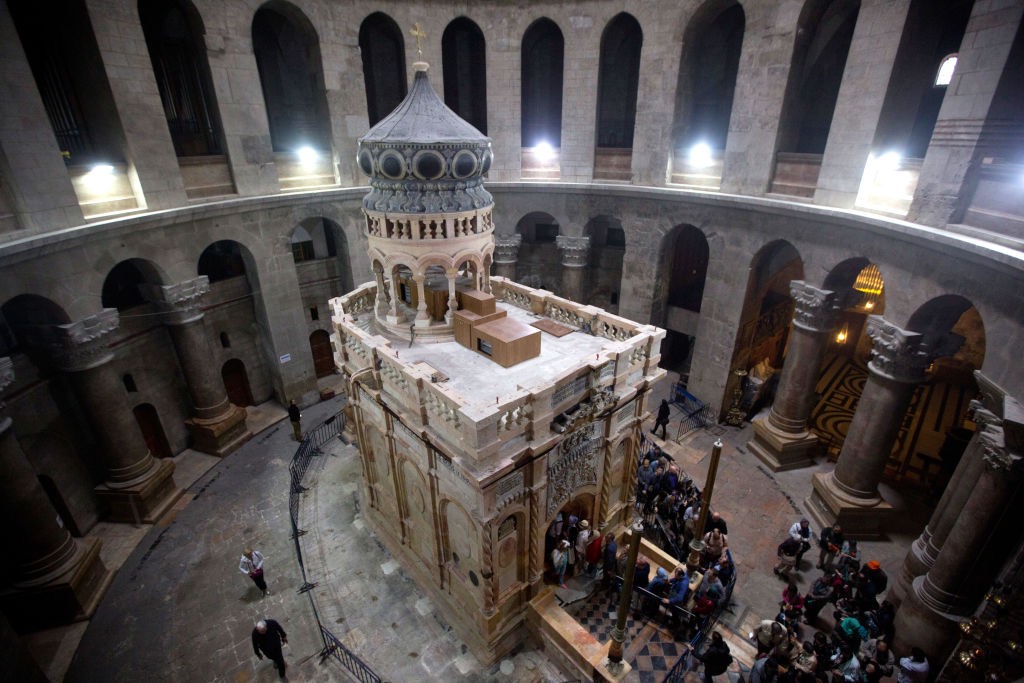Shrine Over Jesus' Tomb in Danger of 'Catastrophic' Collapse

A shrine built over a cave that is revered as the tomb of Jesus is in danger of "catastrophic" collapse, according to a report by National Geographic.
The shrine (or the "Edicule," as it is often called) is located within the Church of the Holy Sepulchre in Jerusalem. According to legend, Helena, the mother of emperor Constantine the Great (A.D. 272-337) visited Jerusalem in the fourth century and discovered the cave where Jesus was buried after being crucified. Whether Jesus was actually buried in the cave is unknown, and many scholars doubt that Helena actually discovered it; nevertheless, the cave has been a place of Christian pilgrimage for many centuries.
Since the fourth century, a series of shrines and churches have been built over the cave, each one eventually being destroyed or falling into disrepair. Today, the cave is covered with the Edicule, which in turn is covered by the Church of the Holy Sepulchre. [See Photos of the Church of the Holy Sepulchre in Jerusalem]
Repair and restoration work at the Edicule has been going on for the past year, during which the limestone bed that Jesus' body was supposedly buried on was revealed. Today (March 22), National Geographic reported that the Edicule is in danger of "catastrophic" collapse if further repairs are not undertaken soon.
The National Geographic Society is a partner in the repair work and has access to a report on the structure's stability, which was written by a team of scientists from the National Technical University of Athens (NTUA).
"When it fails, the failure will not be a slow process, but catastrophic," said Antonia Moropoulou, chief scientific supervisor of the NTUA team, National Geographic reported.
National Geographic says the NTUA team needs to conduct a new 10-month project, one that would cost 6 million euros (about $6.5 million), to repair and strengthen the Edicule's foundations. The project would also add new sewage and rainwater drainage to protect the Edicule from water damage. Archaeological excavations would need to be conducted before repairs begin so that the foundations of the shrine can be strengthened without destroying archaeological remains.
Get the world’s most fascinating discoveries delivered straight to your inbox.
This new archaeological research could shed light on the history of the various churches and shrines that have been built over the cave since the fourth century.
The report has not been made public, and Live Science could not verify the details reported by National Geographic.
Originally published on Live Science.

Owen Jarus is a regular contributor to Live Science who writes about archaeology and humans' past. He has also written for The Independent (UK), The Canadian Press (CP) and The Associated Press (AP), among others. Owen has a bachelor of arts degree from the University of Toronto and a journalism degree from Ryerson University.


